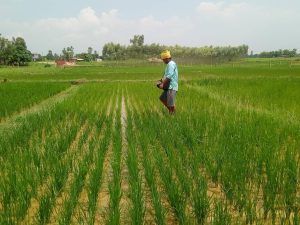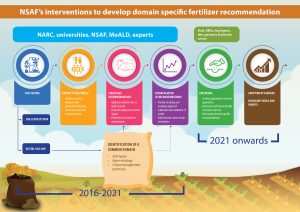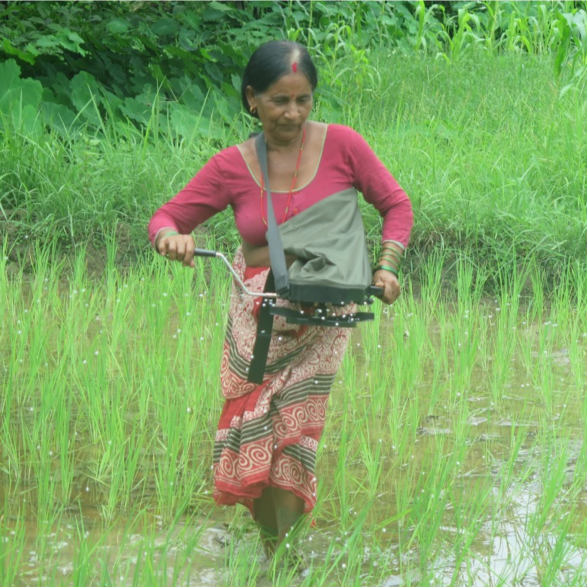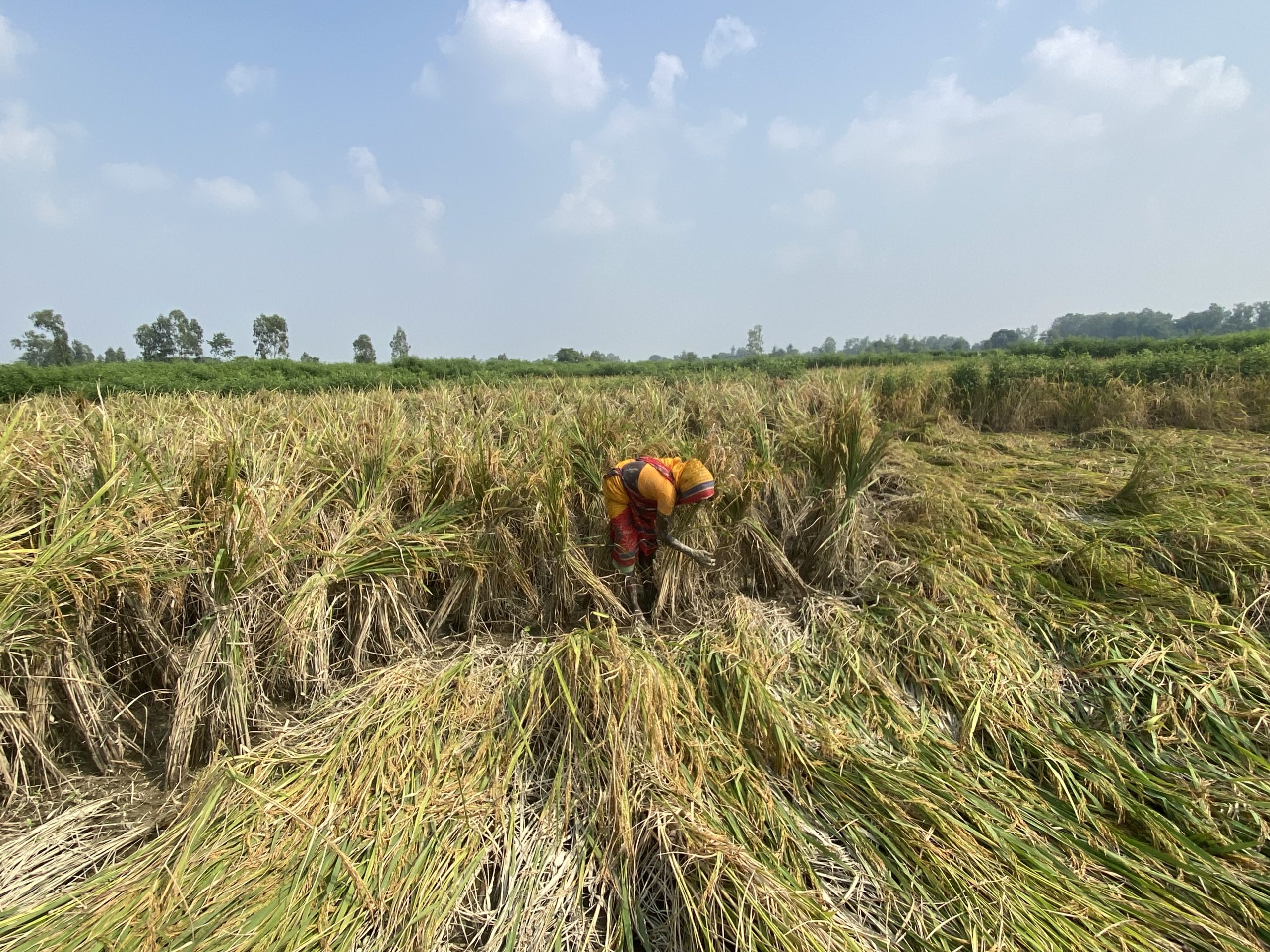
After four decades, new site-specific fertilizer recommendations for rice have been introduced in Nepal that will help farmers increase the crop’s productivity by 10-30%, compared to their current practices.
The Ministry of Agriculture and Livestock Development (MoALD) endorsed the new fertilizer recommendations for rice crop at a consultative workshop in July 2022 held in Kathmandu. Developed by the International Maize and Wheat Improvement Center (CIMMYT), in close collaboration with the Nepal Agriculture Research Council’s (NARC) National Soil Science Research Center (NSSRC) and International Fertilizer Development Center (IFDC), the new regime replaces the existing blanket approach of recommendations to help increase crop yields and fertilizer use efficiency.
The blanket approach assumed the whole country as one domain despite the heterogeneity in soils, other biophysical conditions and agronomic management practices, including crop varieties. As a result, fertilizers were under-utilized in low fertile soils or overused in farms with high soil fertility status, thereby farmers were not able to obtain the achievable yield.
Unlike the generic recommendations, the site-specific fertilizer management will help farmers to determine the crop’s fertilizer requirements based on soil fertility status of a particular farm, attainable yield target of the selected crop variety, crop’s yield response to fertilizers and agronomic management practices, such as irrigation, cropping systems etc. In other words, this new regime allows farmers to produce more with less fertilizers through a balanced application of fertilizers based on available soil properties.
Old is not always gold
Generally, soil fertility status changes every 3-5 years when there is continuous nutrient removal from soils due to an intensive cropping system with the adoption of high nutrient demanding improved and hybrid varieties. Thus, soil fertility management recommendations should be updated periodically but the existing recommendations were not updated since 1976.
Realizing the limitations, CIMMYT through the Nepal Seed and Fertilizer (NSAF) project, supported by USAID, worked with NSSRC and IFDC to formulate fertilizer recommendations for major cereal crops and vegetables for specific domains of the country.
Under NSSRC’s leadership, a ‘Fertilizer Recommendation Committee’ comprising of a dedicated team of soil scientists within NSSRC and NSAF experts was formed to develop site-specific fertilizer recommendations using the Soil-SMART framework for delivering balanced fertilizers to farmers. Based on soil fertility status, agro-climate, irrigation regimes and geography, the country was divided into six soil fertility domains — four in the Terai region (Eastern, Central, Western and Far-western), one in inner Terai and one in the hills. Under each domain, recommendations were based on the attainable yield, crop variety, and irrigation regime.
This approach was first tested for rice crop.
Formulating new recommendations for rice
Three fundamental steps were used to develop site-specific fertilizer recommendations, which included: i) selection of yield goal, ii) estimation of crop nutrient requirement, and iii) estimation of indigenous nutrient supplies. To collect this information, NSAF and the committee designed field trials on nutrient omission and nutrient rates to determine the yield limiting nutrients and their optimum rate, respectively. Data from fertilizer trials conducted by different research institutes and universities, including trials from the project sites were collected and analyzed by the team to see the crop’s yield response to fertilizers. A modeling approach called Quantitative Evaluation of fertility of the tropical soils (QUEFTS) was also used to estimate the indigenous nutrient supply and attainable yield target of rice for different soil fertility domains. This model was applied as an alternate to extrapolate recommendations in areas where field data were not available, considering large financial and human resources required otherwise to conduct numerous field trials across different soil types and agro ecological zones. The model was validated with field trial data before making extrapolation of the recommendations. The QUEFTS model used soil properties from Nepal’s first digital soil map to identify nutrient status and deficiency.
In addition to agronomic optimum rate, an economic analysis was also conducted to see economic variability of the recommendations.
The newly developed recommendations provide guidance for balanced fertilization as it includes micronutrients zinc and boron, and organic inputs in addition to three major nutrients —Nitrogen, Potassium and Phosphorous (NPK). Results from field trials suggested that the new recommendation could increase rice productivity by 10-30% compared to existing farmers’ practice.

Advocating for endorsement
A three-day workshop was organized by CIMMYT and NSSRC to primarily share and approve the recommended fertilizer dose for rice crop as well as its relevance to achieve potential yield at farm level. Rajendra Mishra, joint secretary of MoALD inaugurated the event that was chaired by the Director of NARC’s Crop and Horticulture Research. Workshop attendees included MoALD, NARC, Department of Agriculture, USAID Nepal, secretaries from the Province Ministry of Land Management, soil scientists, university professors, agronomists and other high-level government officials.
During the workshop, NSAF explained the application of QUEFTS model with reference to the case of rice based on the field trial data for domain specific fertilizer recommendations. Shree Prasad Vista, soil scientist at NSSRC, summarized the results for rice as the approach and facilitated its approval from MoALD. The participants also discussed on strategies to link with the extension system to reach a large number of farmers through the three-tier governments. Fourteen research papers on nutrient management for major cereal crops were also reviewed at the event.
“I congratulate NARC for this historical work on updating the fertilizer recommendations after 46 years. Now, we are moving towards sustainable soil fertility management by adopting site-specific fertilizer recommendations,” said MoALD Secretary Govinda Prasad Sharma.
Although the recommendation for rice was a significant output of the workshop, fertilizer recommendations for other major crops will be carried out following a similar process.
NARC’s Executive Director Deepak Bhandari commented, “It is our pleasure to move from a blanket approach to site-specific approach. This is a milestone for agricultural research in the country and I would like to thank all the scientists, NSAF project and USAID’s support for this notable achievement.”
Similarly, speaking at the event, Jason Seuc, Director of Economic Growth Office at USAID Nepal, emphasized the importance of soil fertility management for achieving food security targets set by the Government of Nepal. Seuc remarked that a sustainable soil fertility management is critical not only for food security but also for reducing the environmental pollution.

 Gender equality, youth and social inclusion
Gender equality, youth and social inclusion 